JA (or Jim) Mortram was born in 1971, and studied art in Norwich. In his third year of college he dropped out to become the primary carer for his mother, who has chronic epilepsy, in a small market town in Norfolk called Dereham. In 2006 he started shooting people in and around Dereham, focusing on those facing disadvantages and social exclusion; he went to create a blog called Small Town Inertia, featuring his images and their words. The blog was critically acclaimed early on, and in 2013 Mortram was one of BJP‘s Ones to Watch. Mortram has made publications of three of his stories with Cafe Royal Books, and recently published the book Small Town Inertia with Bluecoat Press. The exhibition Small Town Inertia is on show at Side Gallery, Newcastle from 12 January – 24 March
BJP: When did you get into photography?
JA Mortram: About seven or eight years ago, in the months before I started the Small Town Inertia blog. It both saved and completely transformed my life.
After years of being a carer for my disabled mother, I’d become highly marginalised. Being a carer is the best thing I’ve done with my life, but it did not come without a heavy price. Years of isolation, witnessing days and nights of terrible physical and mental pain, it does affect you. I became withdrawn, anxious, had terrible panic attacks, self-medicated, self-harmed, struggled and struggled – until it reached a peak where I just shut down, for almost a year I didn’t say a word out loud. When I first held a camera, it really re-connected me with myself, a moment of clarity.
I knew little to nothing about photography or the history of photography, then about three years into it I found a book at a yard sale that included Eugene Richards’ work. It was so incredible, his work is so powerful, so drenched in reality and empathy. For the first time I had knew and understood that there were others making work with a social conscience.
BJP: How did you get to know the people you photograph in Dereham? It’s really nice to see the same characters pop up again and again.
Mortram: I met everyone as a stranger and over time, years, they have all become more like family. Even new people I meet, it’s community, it should be a richer relationship than just strangers.
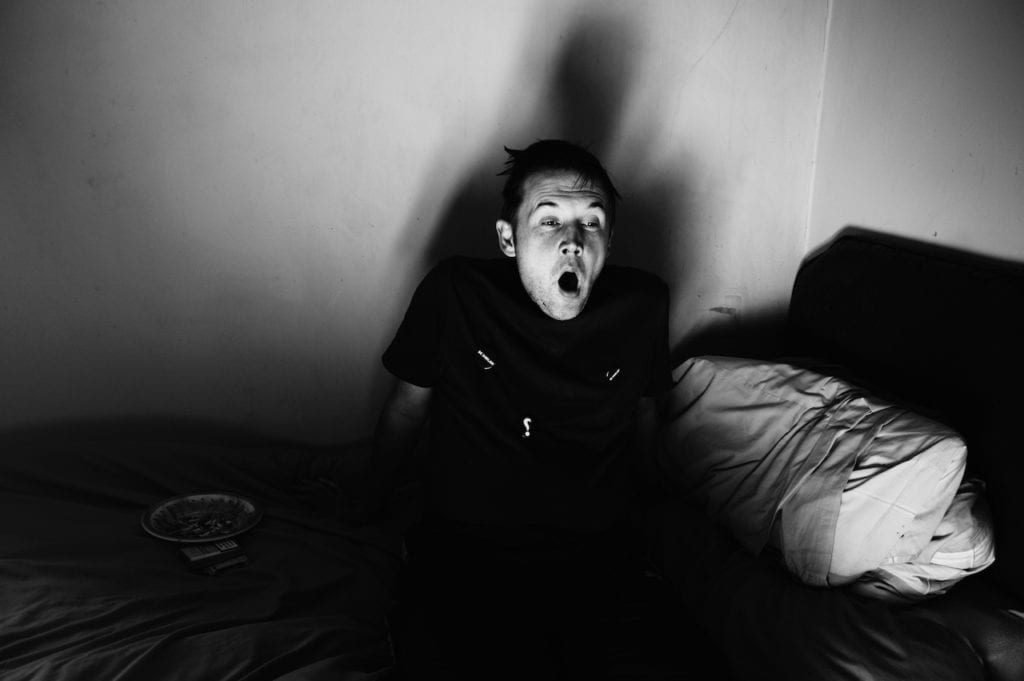
BJP: Your photographs seem very intimate – how do shoot them?
Mortram: I’m invited. Essentially when I am with people, it has nothing to do with photography – I don’t change who I am because there is a camera in the room and, equally essential, nor do they. The key component to facilitating intimacy is trust, trust and a desire on all parts to share testimony and truth.
As a photographer you have to listen in so many ways – the real key is to check one’s ego in at the door, to not think of the camera as a free pass or a shield. It’s just a tool. The one thing you have to remember to bring with you when you make work is your humanity and humility.
BJP: I’ve read that you feel that much of the job for Small Town Inertia is just going and talking to people, letting them tell their side of things.
Mortram: Yes, that listening is essential, is everything. Listening is the seed of trust, is the key that enables the photographs. In truth, it’s what we should all do for those around us, for it’s often the one thing we desire – to be heard, to be listened to. I’d say 90% of all I do on shoots is listen, and I’ve shared thousands and thousands of conversations over the years.
BJP: I love the long monologues on the Small Town Inertia blog – why do you include them?
Mortram: The conversations, the testimony is essential – that context roots images into reality and leaves little opportunity for any viewer to superimpose any baggage they might bring to a photograph. I think it’s vital to include testimony, context, to images, especially when working with the scenarios and situations that I do. It would be highly irresponsible not to. For me, it’s all about affording the chance to the people I photograph further opportunity to share their feelings, their experiences, their reality.
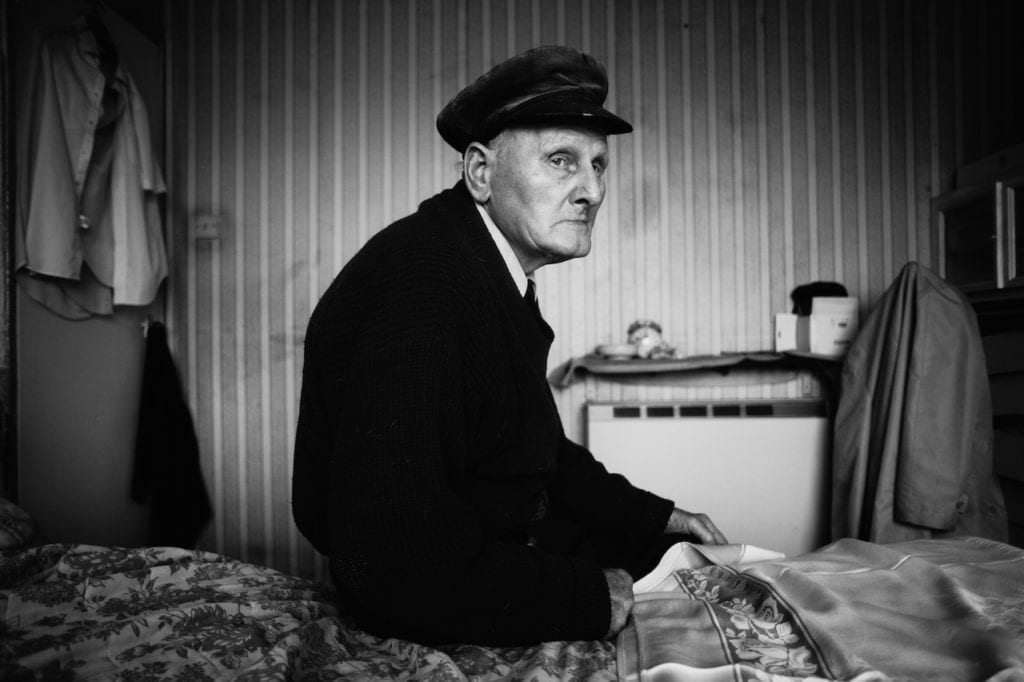
BJP: Many of the people you photograph are experiencing tough times – why do you want to photograph them? Can your images can help them?
Mortram: I never meet anyone and think ‘How can I make images of struggle or suffering?’ In truth, I wish I never, ever had to do so. What I do do is ask ‘What do you wish to talk about, to share? What’s happening in your life, what is the thing you want people to understand?’ and we work from there. It’s a total collaboration.
The first instance of help is the help it gives the people I work with, to have someone that cares, that listens. Secondly, the photographs often are seen by people whom find themselves in the same situation and, many times for the first time in their lives, they understand that they are not alone.
Lastly, if any photography or any testimony helps another person understand that there is great suffering happening on their doorstep, my hope is that it will provoke a reaction of care, of empathy – and those emotions will fuel a desire for change, for solidarity with those around them and a more socially aware and conscious outlook on life.
BJP: Why do you photograph in black-and-white?
Mortram: In truth when I started my monitor was used and broken, it had a terrible colour cast so I couldn’t work in colour at all. By the time I was able to get a good monitor I’d shot half the work to date. But I’d still have made the work in monochrome by choice – it’s direct, I love negative space, and I love to print in mono.
Everything I have done has, in part, been a reaction to what I perceived as an imbalance of truth. I’d look at mainstream media and see no reflection of the realities I see portrayed within it. Using mono is a reaction the colour world presented in [the TV programme] Benefits Street or overtly right-wing tabloids.
I also owe a great debt of gratitude to the family tree of UK documentary photographs, whose work has been a great grounding in socially conscious photography, and to my own father, who I watched developing film in the kitchen sink. Since I was a child, my relationship to photography was that it was black-and-white.
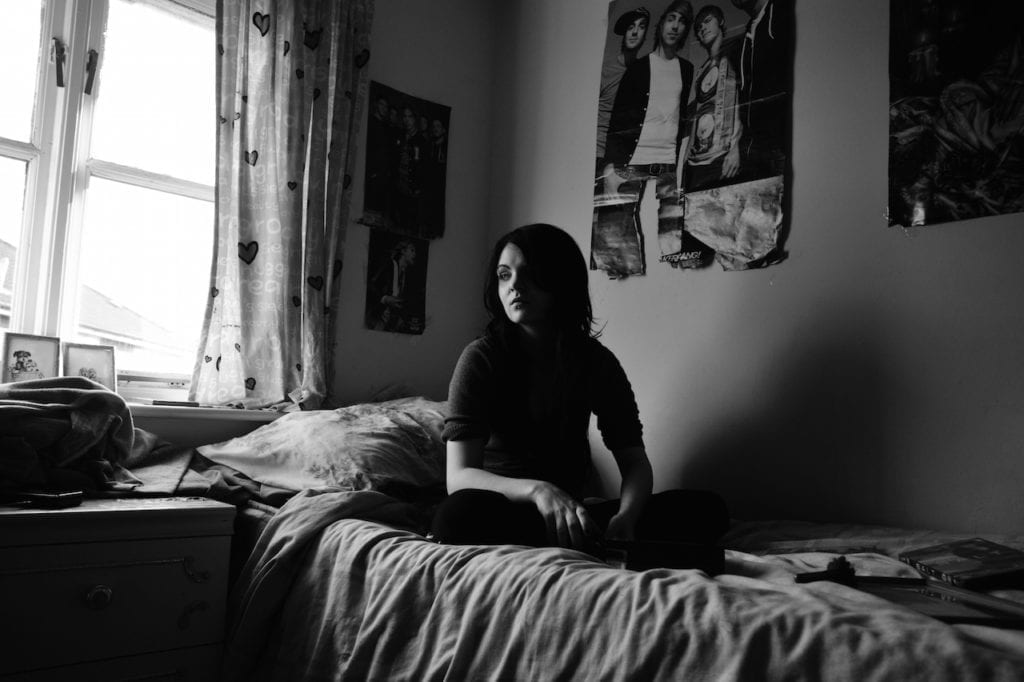
BJP: How do you edit your work?
Mortram: When you work long form, you really live with the images you make, so it was easy to edit down the work for the book – I’d had years to prepare. Making chronological stories was good training and that process really taught me to edit hard. There are thousands and thousands of images that did not make the edit, but they all fulfilled their role in the making of the images that were ultimately included. My failures have always been my greatest teacher.
BJP: Why did you put together a blog and use social media?
Mortram: From day one, I knew that I wanted to share work with supporting testimony – I was not interested in making or sharing art, I was and am driven, compelled, to share the voices of those around me. Starting a blog was the best option to do so, freely, to a global audience. We are lucky to have such tools at our disposal.
I was, and still am, marginalised outside the people I know and document. I can count the people I know in the physical world on one hand but in the virtual world, every bit as real, I know hundreds, thousands. It is incredible – so many, many amazing peers, mentors, supporters, friends. I am very lucky to be part of such a passionate photography community online.
BJP: Why did you want to publish a book?
Mortram: Online it’s a fast river of information, dictated by a mouse click and the attention span the online experience affords. But a book, it’s physical presence, lends a totally different experience, a more human pace, much more intimate. It was that intimacy and pace that instigated my desire to have these stories shared within a book.
I hope the book transcends the photo community and has a life in the wider world. I hope these stories and experiences reach the hearts and minds of those who have never experienced life like this – and also into the lives of those that are in exactly the same situation, so they know that they are not alone, not forsaken, and are people of absolute worth.
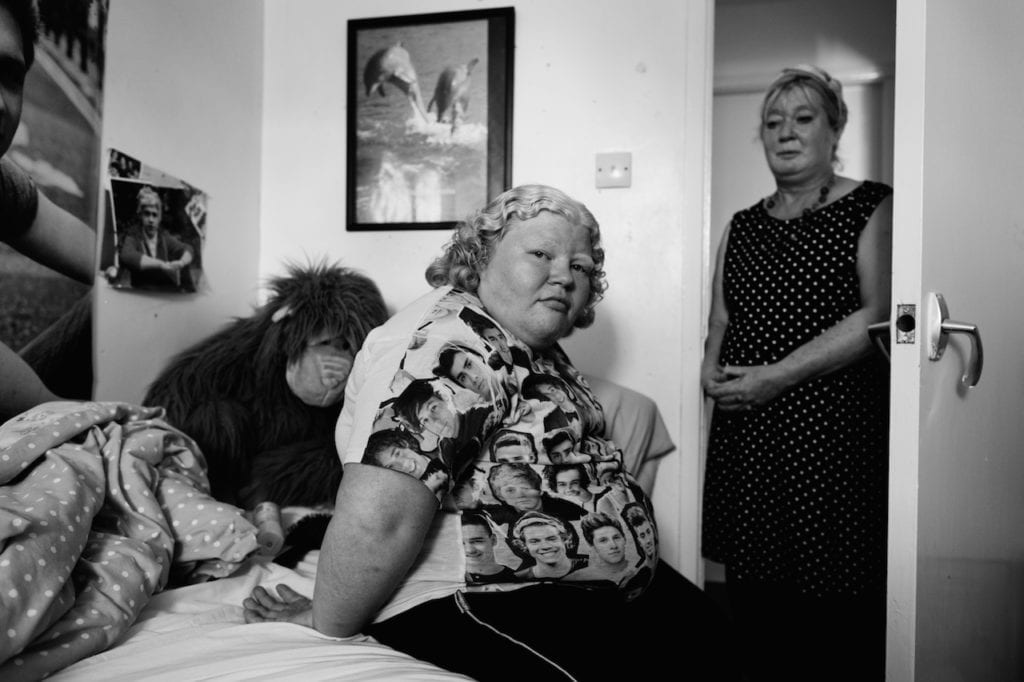
BJP: You’re pretty political online right now – is your photography informed by your politics?
Mortram: My photography is informed by the people around me in my community, and by my life working as a carer looking after my mother. I believe there is no justification for integrating my political views within the testimony of others, and I’ve always been very careful to respect the stories and testimony of others.
However I do wholeheartedly believe that there is little need for me to place my personal political beliefs into stories, for we are all already politicised. If you’re alive in this country, policy affects you, and if you’re old or young, disabled, marginalised, vulnerable, a student, in the arts, a teacher, a nurse etc etc it’s been affecting you to the detriment for the past seven years. Certainly, my personal perspective re politics and what I believe is right and wrong has been empowered and fuelled by photography.
Over the last seven years I’ve witnessed so much pain, had people literally break down in my arms, utterly beaten, terrified, on the verge of suicide as a direct result of cuts to vital services, especially with respect to cuts made to mental health provision. For many, it’s all sound bites and spin, but I’ve seen the blood, guts and tears and absolute despair policy causes for innocent people. Being permitted access to witness these realities has been the greatest honour of my life.
https://smalltowninertia.co.uk/ Small Town Inertia is published by Bluecoat Press, https://bluecoatpress.co.uk
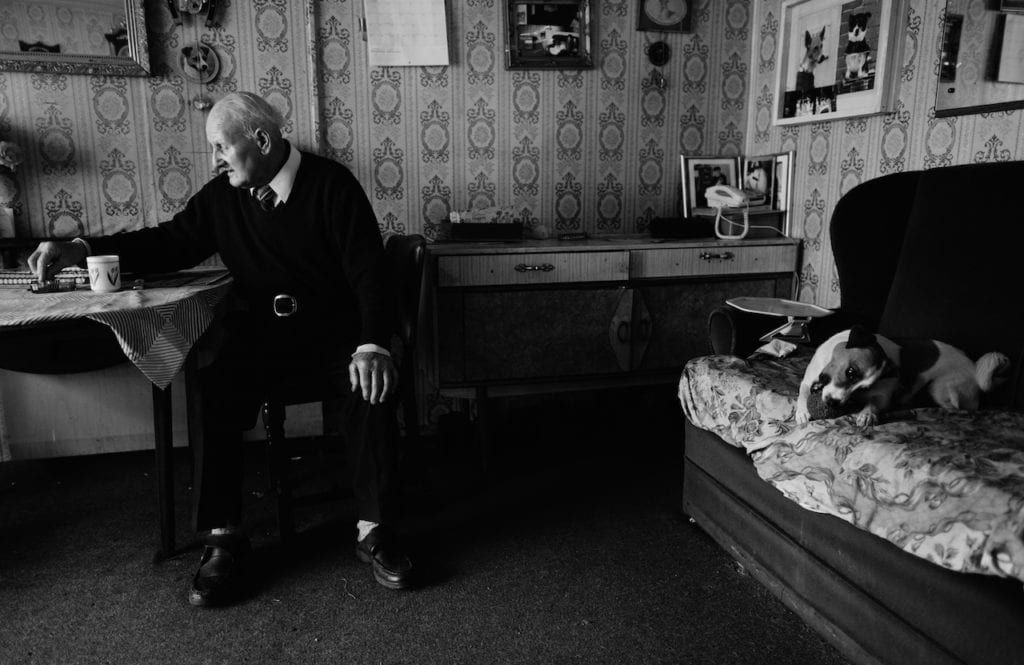
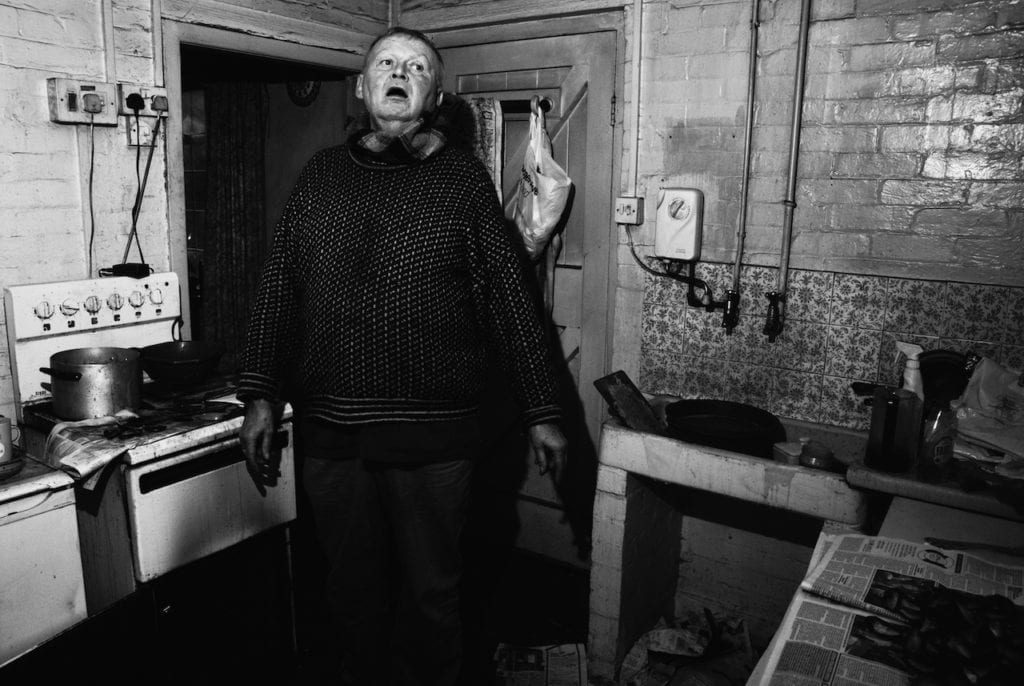
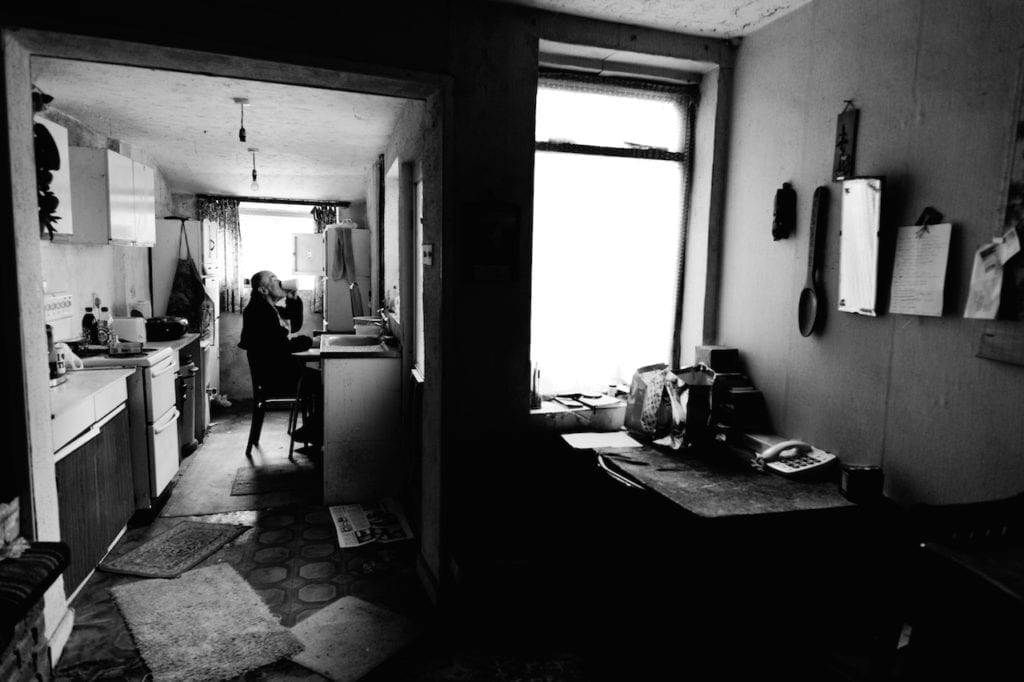
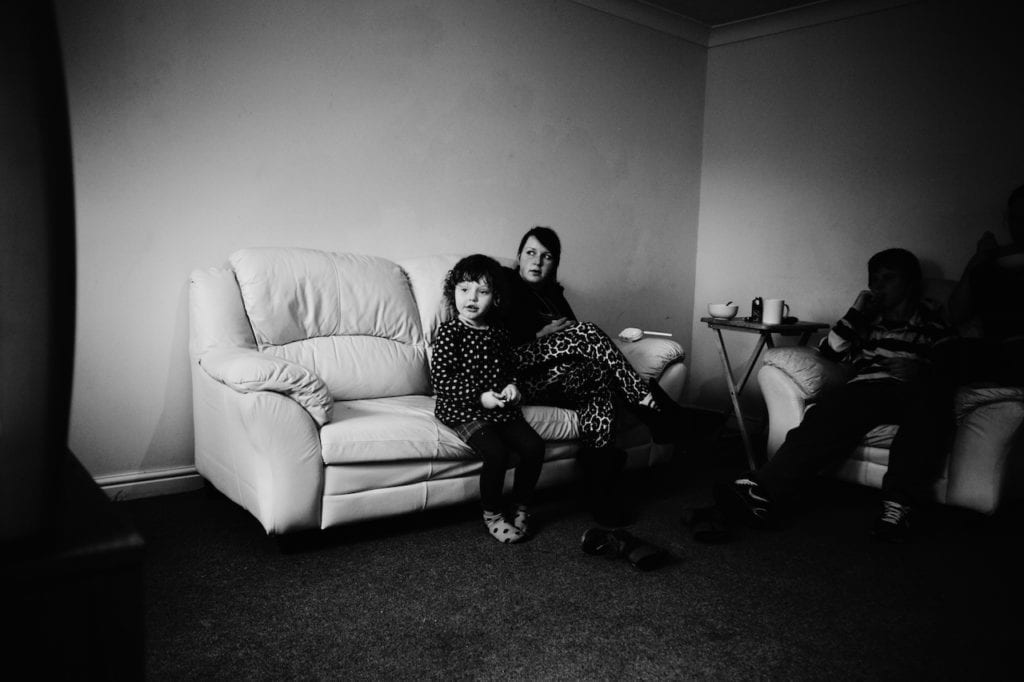
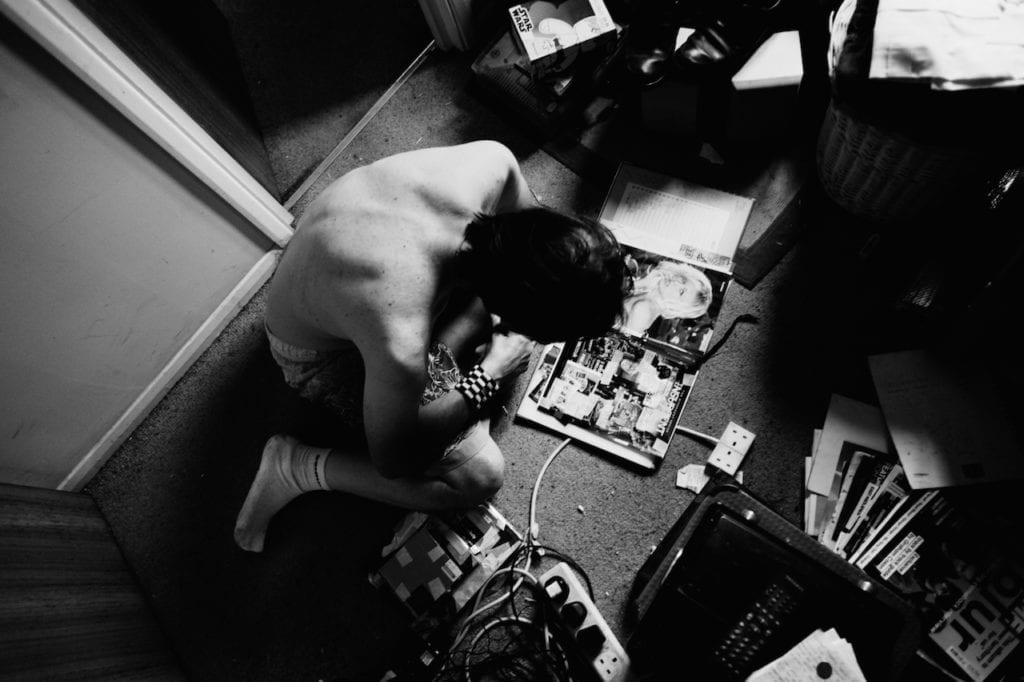

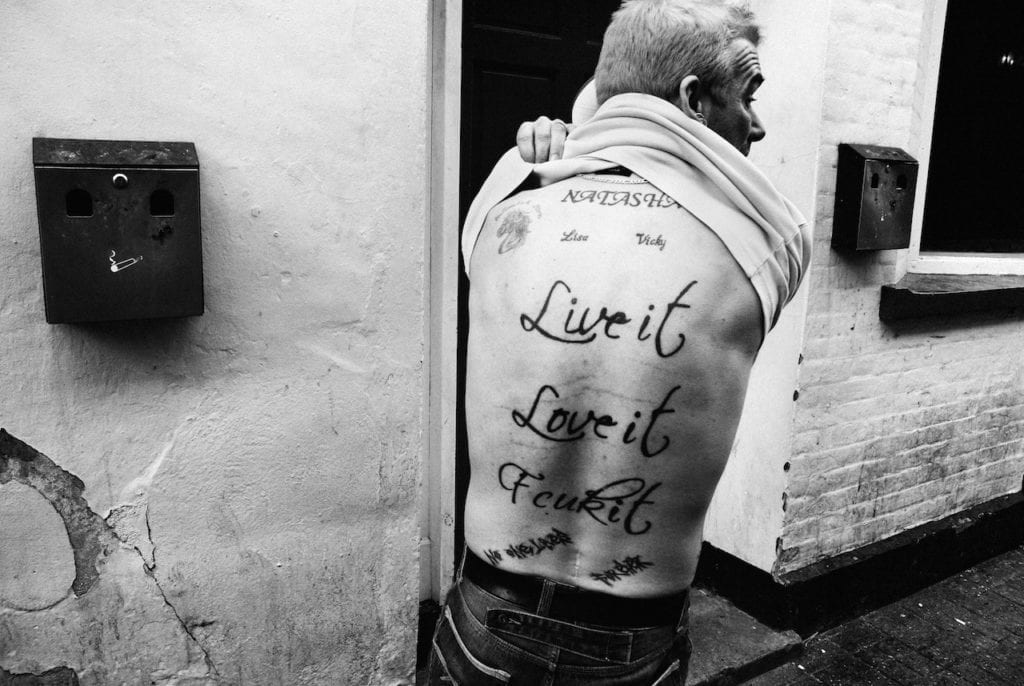
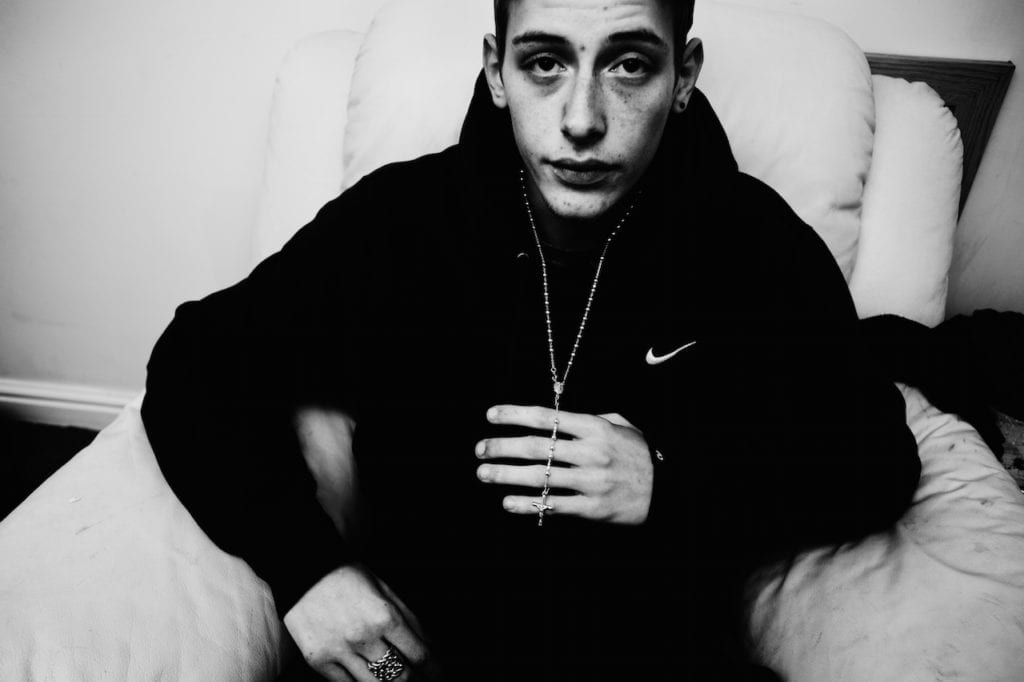
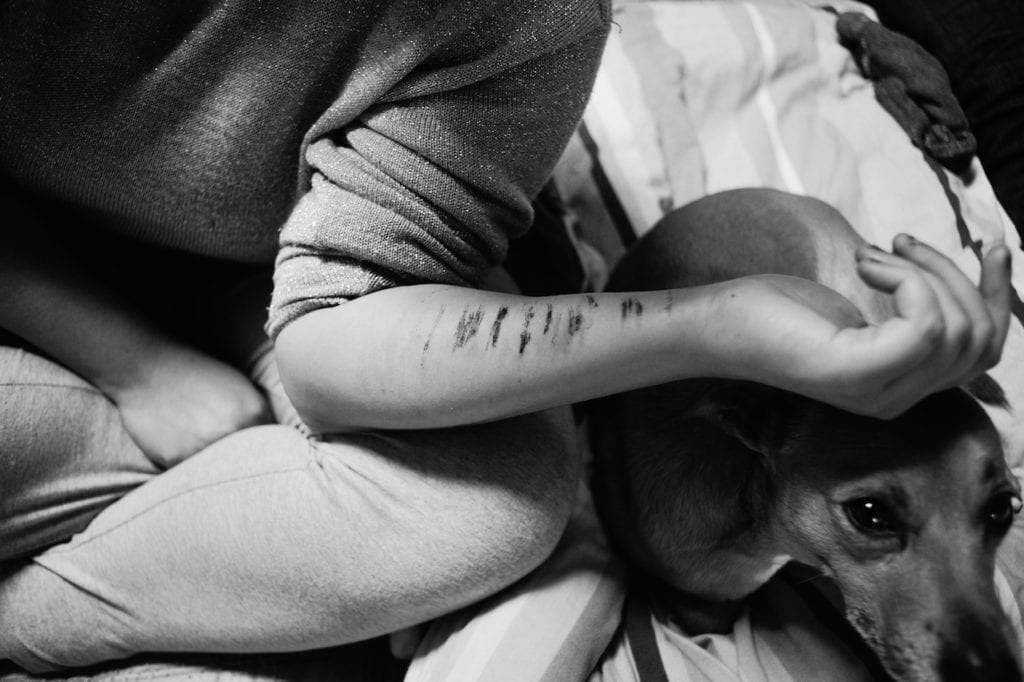
“When I look back to when I self-harmed, I understand why I did it, I just don’t understand how many times I did it, as it was all the time. I’m really surprised I never hit a vein. I used to make sure I pressed down really hard with the razor so I could feel the pain. I know other people that use different things to cut themselves with. It was painful the first time, then I used to keep hiding it from people and it felt good. It felt good as I was hurting myself and not other people. The last time I did it, it was really deep and so I had to go to the doctor’s and they put dye and stuff on the wound. Everyone thought I was just a mental case or something. Really though, it was just my way of coping, a way of me escaping.
“There are so many triggers in my mind and so my brain thinks, ‘You need to cut yourself again.’ Si’s hidden all the razors now. Inside, I think I have changed but I’m also getting more and more angry within as I’ve got no release. People that have never self-harmed just don’t understand.” From Small Town Inertia © JA Mortram

